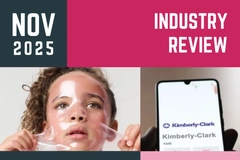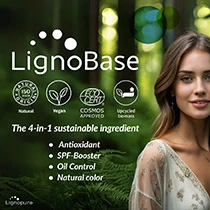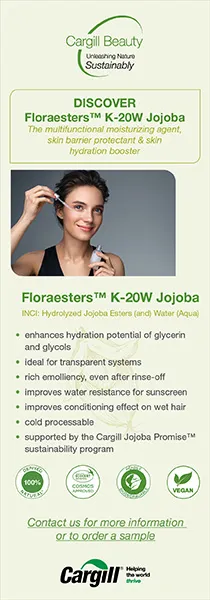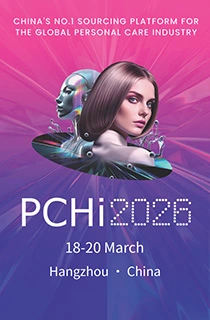SEPAWA Congress 2025: Hair care is “all about bubbles” as sustainable surfactants trend
Key takeaways
- Sustainability dominated SEPAWA Congress 2025, with companies showcasing mild, biodegradable, and microbiome-friendly surfactants.
- Brands are prioritizing scalp microbiome-friendly surfactants and holistic hair care solutions.
- Formulation and footprint innovations emerged, including replacing palm-based and silicone ingredients to cut emissions.

Mild and environmentally friendly surfactants are being increasingly recognized in the sustainable beauty space for their hair care applications.
Last week, at the SEPAWA Congress 2025 in Berlin, Germany, Personal Care Insights spotted that ecological surfactants were one of the most talked-about ingredients for hair care innovations.
Scalp health and the microbiome also strongly influenced hair care innovations, as solutions trend toward a more holistic approach to cosmetics.
Dr. Petra Kudla, global marketing manager for hair care at Clariant, told us: “Everything in skin care swaps into hair care… Hair cycling came from skin cycling, which originated when consumers had various needs and needed several products to tackle those needs.”
She added that to tackle these needs in products, Clariant focuses on mild surfactants, which are not irritating but still make the hair smooth.
Scalp microbiome
Scalp care is paying attention to the skin microbiome. Innospec showcased its microbiome-friendly surfactants at SEPAWA Congress 2025.
Jackie Searle, Innospec’s business manager for personal care in the EMEA region, told us that the company is “all about bubbles.”
“We demonstrate how to create different foam structures and feels. We have various formats such as shampoos, foam bars, shower gels, and face wash, but this year, we have a couple of new areas we have been working on, including pet shampoo.”
“Another product showcased has a new technology with it. It is a surfactant blend that is ultra mild.” Searle explains that it has undergone vigorous testing and has been certified as microbiome-friendly for the scalp.
 Kudla says that everything for skin care translates into hair care.Studies have shown that harsh surfactants in personal care products strip oils from the skin layers and impair the skin barrier function, which can directly impact the microbiome.
Kudla says that everything for skin care translates into hair care.Studies have shown that harsh surfactants in personal care products strip oils from the skin layers and impair the skin barrier function, which can directly impact the microbiome.
Nadine Krug, senior application technologist at Symrise, echoes the importance of the microbiome for hair care solutions.
“We see scalp care and that consumers focus on the microbiome, and holistic beauty, combining topical and inner care for overall well-being.”
Looking ahead, Krug identifies that sustainability will continue its foothold in the sector.
“We see a green conditioner revolution, replacing synthetic ingredients with natural, high-performing ones,” she says.
“We are showing how nature and science can create meaningful innovation, and Symrise aims to be the choice for brands in delivering ethical, sustainable, and effective solutions that perform.”
Sustainable surfactants
Syensqo also showcased surfactants, such as its Geropon ingredient, for skin and scalp care.
On the show floor, we spoke with François-Florian Bruckner, business development manager for EMEA home and personal care at Syensqo, about its biodegradable surfactants and their applicability for cleansing the body, face, and hair.
“We are targeting formulators seeking easy-to-handle ingredients that are ‘ticking many boxes’, such as naturally having primary and secondary benefits. They are also sulphate-free, which is quite challenging to have stable and clear formulations.”
Bruckner details that its mild surfactant ingredient, Geropon, is “better than competing ingredients.” He says it is less harsh regarding performance on the skin and scalp and is suitable for sensitive skin.
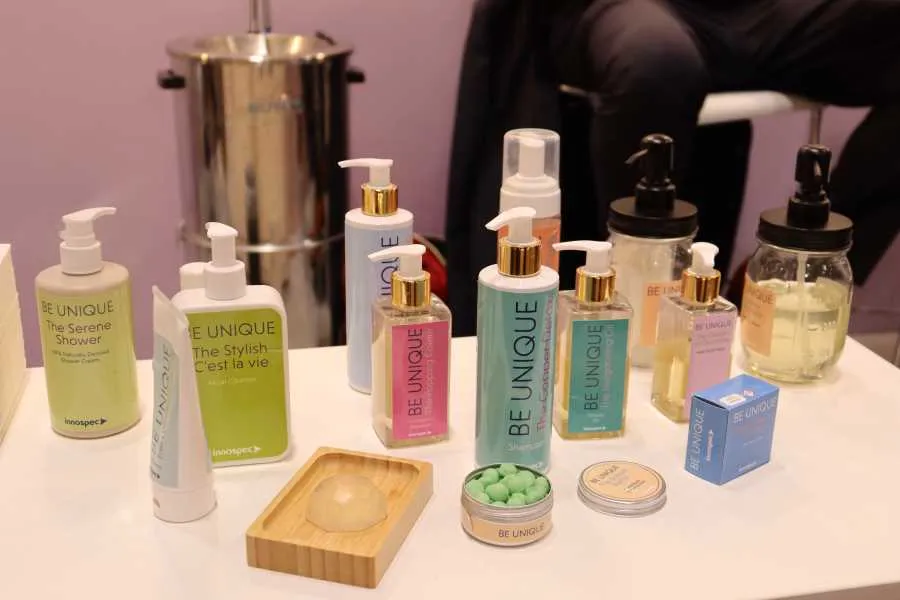 Searle said Innospec has several formulations tackling reducing environmental footprints.Looking forward, Bruckner shares: “We have to be good for the hair, scalp, and skin, but also for the planet. I would say all naturality based, all biodegradable, and trying to reduce the environmental footprint is a must. We try to tackle these challenges with our new ingredients.”
Searle said Innospec has several formulations tackling reducing environmental footprints.Looking forward, Bruckner shares: “We have to be good for the hair, scalp, and skin, but also for the planet. I would say all naturality based, all biodegradable, and trying to reduce the environmental footprint is a must. We try to tackle these challenges with our new ingredients.”
Many conventional surfactants, including sodium laureth sulfate, are derived from palm oil, which is under increasing scrutiny due to its role in deforestation and carbon emissions.
To increase sustainability, Innospec is working to reduce water content in its products. This reduces the product’s weight and overall footprint when being shipped globally, as well as the amount of plastic packaging required.
Searle said Innospec has several formulations tackling this, such as solid bars, dried concentrates, and dilutable concentrates. These are suitable for various personal care products for hair, body, and face.
Reducing environmental footprint
Environmental sustainability remains on the priority list for cosmetic ingredient manufacturers, and only seems to climb higher over the years.
At SEPAWA Congress 2025, Lignopure told us that its primary goal is environmental sustainability. The company uses lignin for various cosmetic applications. Since it is upcycled from the paper industry, it is usually considered waste and is burned.
“We give it a second life so it can also reduce the environmental footprint, and that’s how we contribute,” said Yuan Gao, product innovation scientist.
“What differentiates lignin from other products on the market is its sustainability profile.”
Brenntag’s director of industry management for beauty and personal care, Stefano Rossiello, explained how sustainability and innovation go “hand in hand.”
“We look for eco-friendly products and processes with our partners. Basically, we believe we are in a position to offer our customers the chance to produce and innovate with products that reduce their environmental footprint,” says Rossiello.
He exemplifies sustainable surfactants and natural emulsifiers as replacements to silicone-based solutions. “These are some of the products we use to help our partners deliver sustainable beauty.”

